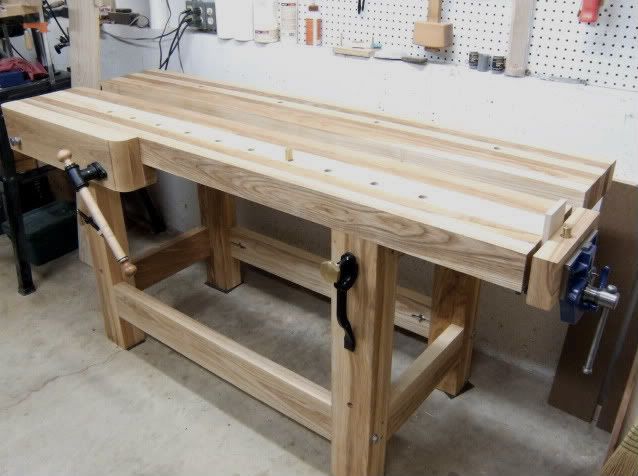
Originally Posted by
george wilson

The wooden threads on the vise screws look very nice. Good,big threads the way they should be for wood. How did you make them? Usual commercial tap and die sets make the threads too small.
We had a 1960's vintage German tap and die set at Williamsburg that made 2" screws with 3 threads per inch. the threads were large and appropriate,but the new commonly available sets make threads too small.
I did see some good German sets in the Dick catalog,but they were something like $1500.00 per set.
I generally make a tap out of drill rod,and for the threads I'd hold a router at a 45º angle in the metal lathe,and cut beautiful,perfect wood threads. Fortunately,the old wood threads were 90º rather than 60º like metal threads,so feeding the router in at 45º worked perfectly.
For many antique reproduction spare parts,I'm always having to make a special tap up,so have several on hand by now in smaller sizes,for things like embroidery frames,spinning wheels,etc..





 Reply With Quote
Reply With Quote This one is all ash with the Lie-Nielsen twin screw vise. It also is made to be easily moved and reassembled. The top is two slabs with a tray in between.
This one is all ash with the Lie-Nielsen twin screw vise. It also is made to be easily moved and reassembled. The top is two slabs with a tray in between.




 I expected to have to re-tighten the wedges periodically, but what I found was that the sections twisted and buckled, undoing all the work I did planing the top flat.
I expected to have to re-tighten the wedges periodically, but what I found was that the sections twisted and buckled, undoing all the work I did planing the top flat. The dowels are still necessary to hold the top in place, and I left the wedges and sliding dovetails as well. Then I planed the top for about the fourth time.
The dowels are still necessary to hold the top in place, and I left the wedges and sliding dovetails as well. Then I planed the top for about the fourth time.




